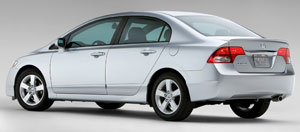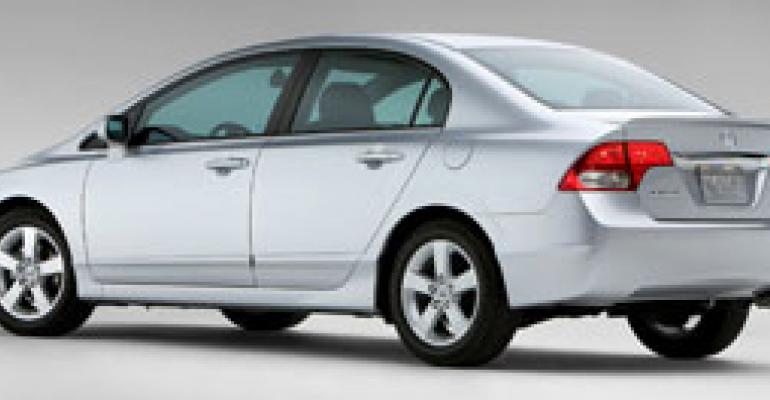
U.S. auto makers sold 1,069,227 light vehicles in August, a moderate 3.4% improvement in daily sales that came in the wake of Hurricane Irene, which buffeted the East Coast on the month’s final weekend.
The sales results equated to a 12.1 million-unit seasonally adjusted annual rate, marking a slight decline from July. But with Irene hitting dealers during what traditionally are the busiest days of the month, there’s reason to view the SAAR as an indicator of improving demand.
Indeed, while lagging consumer confidence, high unemployment and a terrible housing market all stand in the way of a full-blown economic recovery, the largest impediment to a 13 million-plus SAAR is supply, not demand.
The 13 million-unit SAAR registered in the year’s first quarter was supported by inventory near 2.5 million units. But after the March earthquake and tsunami in Japan wreaked havoc with production schedules around the world, inventories dropped some 20% over the course of five months, while the SAAR fell more than 1 million units.
LV inventory declined to less than 2 million units at the end of July, and rose to just over that mark on Aug. 31.
Toyota and Honda have been the hardest hit, and both companies continue to struggle to put vehicles on lots as they work to regain lost share.
Toyota daily sales fell 16.1% vs. year-ago in August, as the auto maker operated with roughly half the inventory available 12 months ago.
Honda, which has been slower to return output to normal, saw daily sales fall 27.2% from year ago. The auto maker took just 7.7% of the market and fell behind Nissan and Hyundai/Kia for the second straight month, while selling 82,321vehicles in August from a starting inventory for the month of just 84,705 vehicles.

Honda managed to increase its stock to more than 100,000 units by the end of August, but still heads into September with less than half the inventory it had a year ago.
Related document: U.S. Light Vehicle Sales – August 2011
Hyundai’s market share, which had topped 5.6% in the wake of its Japanese competitors’ troubles, fell below 5.5% last month, as the auto maker bumped against its own inventory issues.
Beginning August with a 27-day supply, Hyundai’s inventory fell to 21 days, while its 4.9% year-over-year sales gain was its smallest (excepting Cash-for-Clunker comparisons) since June of 2009.
The Detroit Three continue to operate with the largest inventories in the industry and, concurrently, have experienced the largest year-over-year growth. Together, they registered a 14% increase in daily sales over year-ago in August, more than four times the industry’s growth rate the month.
General Motors’ daily sales jumped 13.5% over year-ago, while its month-end inventory was 23% higher than like-2010. The company’s 66-day supply was the highest in the industry, and its 20.4% market share was nearly two points higher than year-ago.
Chrysler ended the month with inventory 49% above year ago, while it enjoyed its highest daily sales rate since May 2008, on a year-over-year jump of 25.9%.
Ford, the relative underperformer among the Detroit auto makers, with sales up 7% in August, also began the month with the lowest days’ supply of the three, at 54. Unit inventory at the beginning of August was up just 4% from year-earlier levels.
For the second-straight month, low inventory stalled deliveries of the promising Focus small car. Launched in March, the Focus sold more than 22,000 units in May, coming within several hundred units of besting segment rival Chevy Cruze.
Since then, the vehicle’s inventory has fallen from nearly 22,000 units to just 10,400 at the beginning of August, while monthly sales of the vehicle have plunged more than 35%.
With summer shutdowns largely over, and Honda and Toyota slowing building up their production rates, there’s a likelihood the inventory situation will improve in September. But it’s doubtful the SAAR will threaten to top 13 million until the industry as a whole can build a supply of 2.4 million vehicles or more.
Calendar-year U.S. LV sales through August totaled 8,436,080, up 10.4% from like- 2010. Model-year sales (beginning October 2010) reached 11,392,426 units, an 11.2% increase over same-period year-ago.





